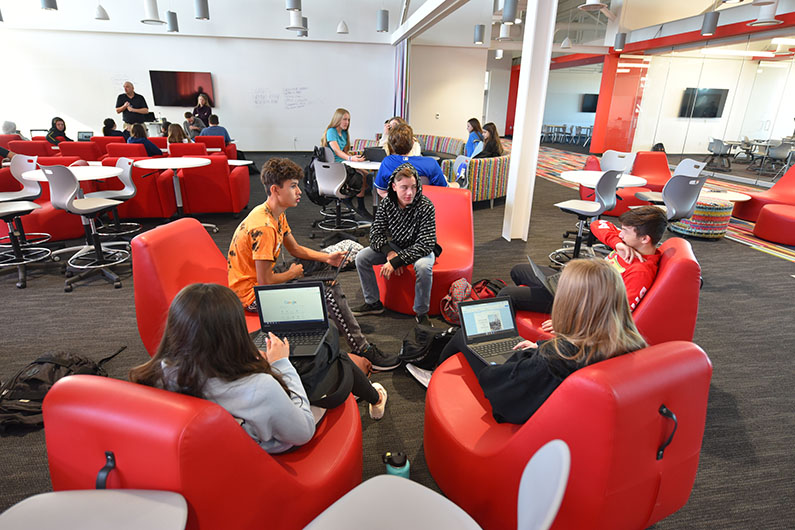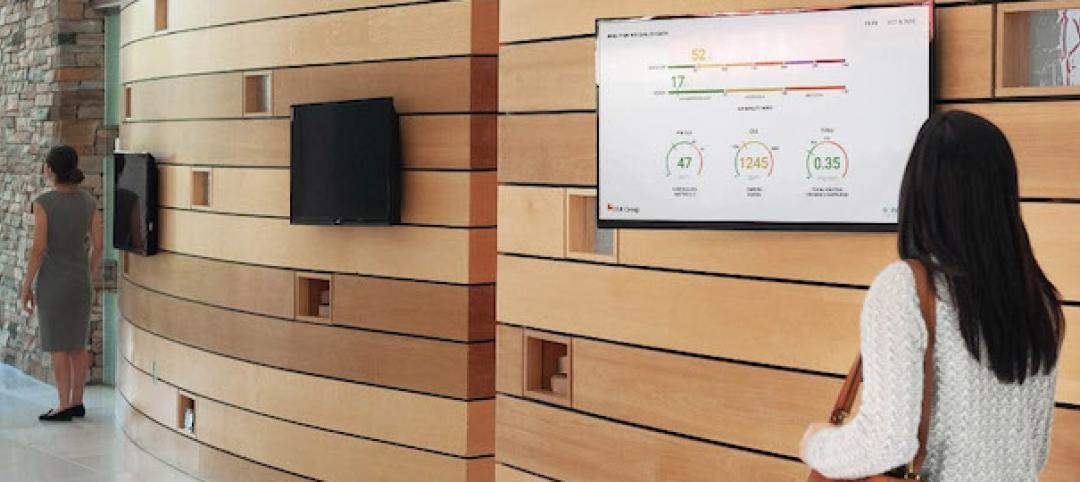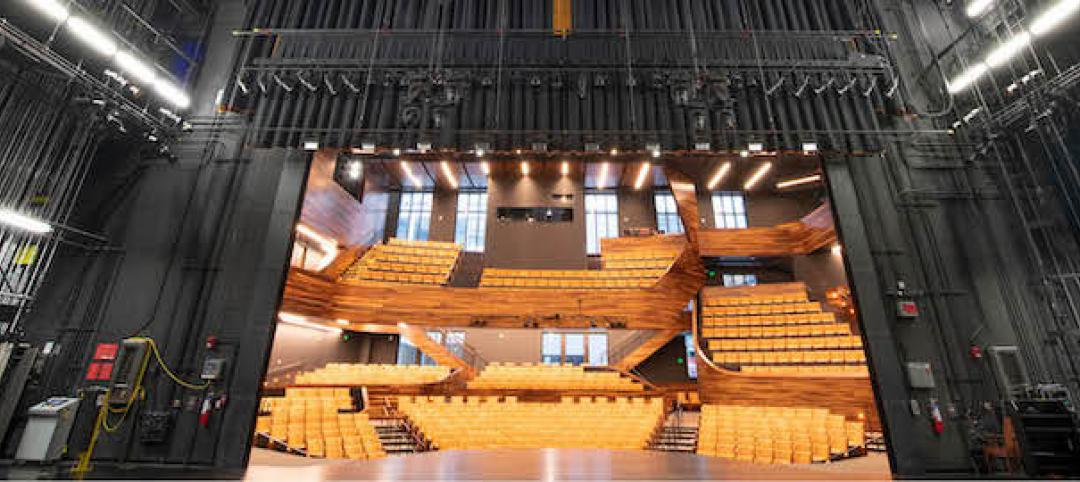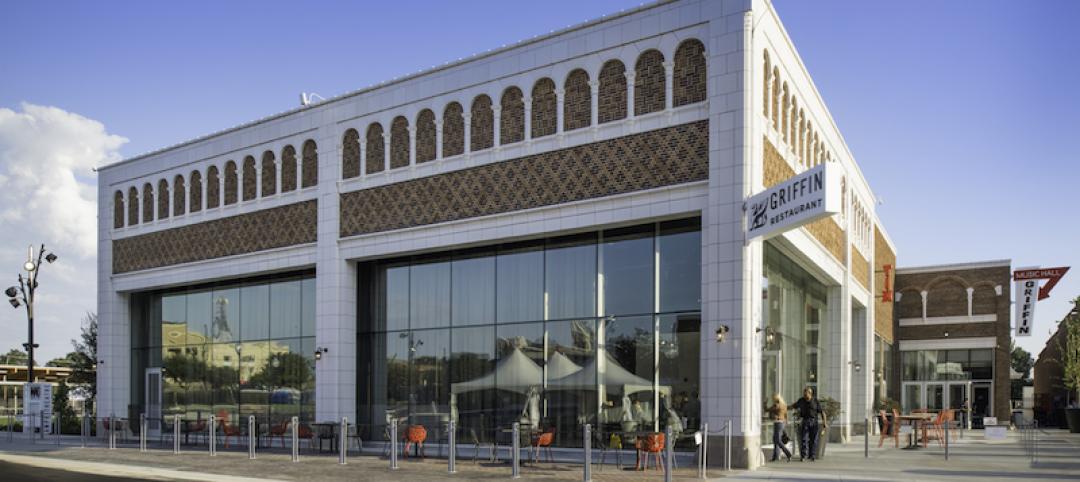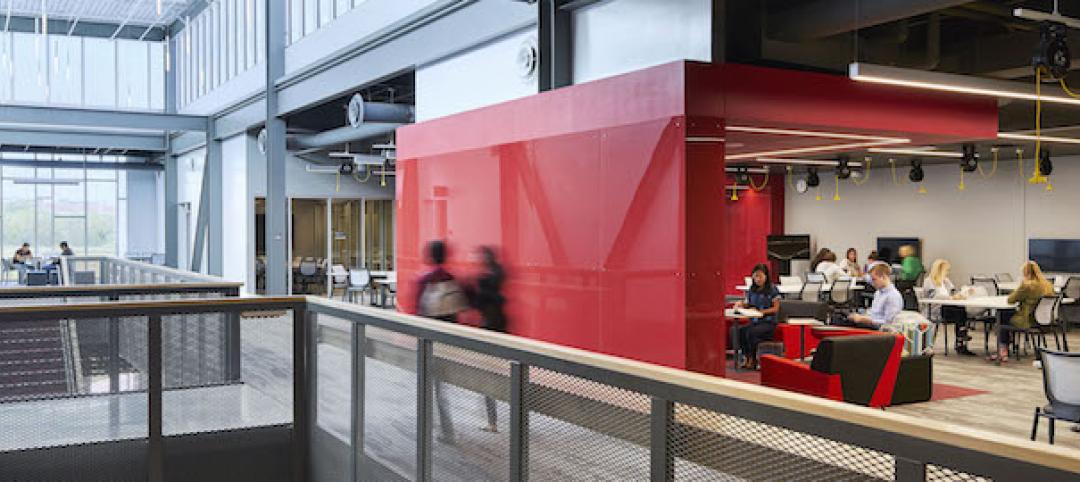The immediate shift to remote learning as a result of the pandemic is forcing school districts to think differently about the delivery of education. To find out more about how COVID-19 is changing learning among K-12 communities, DLR Group conducted personal surveys with school districts across the country, representing more than 2.6 million learners.
The data we collected reflects that virtual learning is here to stay – to some degree – and that the flexibility and individualization it enables are appreciated by both learners and educators. However, school leaders and educators voiced concern regarding how they will adequately maintain socialization and authentic learning experiences in a virtual model.
Many survey participants believe a hybrid or blended future is more realistic. With no guarantees that learners will return to the classroom full-time this fall, educators are exploring other delivery options that can be executed through various means, such as inquiry-based learning.
Transferring Responsibility from Educator to Learner
Inquiry-based education offers a methodology that does not rely solely on the educator being the lead in all learning. It is an active form of learning that begins with inquiry, problems, and scenarios. Learners identify, investigate, and research issues and respond to challenges or complex problems. In order to shift ownership of the learning, an inquiry-based approach is more successful when scaffolded so the practices are taught, supported, and empowered. By moving through the three levels of inquiry – structured, guided, and open - learners acquire the skills for personalized and individualized learning and are prepared for future success:
• Structured: In a structured environment, the learner follows the lead of the educator and the entire class engages in one structured lesson together.
• Guided: In a guided approach, the educator chooses the topic and essential question, while the learner has autonomy to design the product or solution.
• Open: In this case, the learner creates her own essential question with support from the educator, researches needed resources, orchestrates her learning evidence, and designs how she will demonstrate her learning.
A New Environment for Learning
This mode of learning offers varied levels of autonomy and independence and can be implemented anywhere – from brick and mortar settings to remote locations. Rather than imposing a strict linear progression through phases, inquiry-based learning supports learners as they weave through the facets of exploration. The actual environment where inquiry-based learning occurs is a key element in the success of the learner and must be one that motivates, inspires, and challenges individuals to achieve excellence. This environment can be divided in to four respective parts, including academic, physical, social and emotional, and community.
• Academic establishes high expectations and prepares learners for their future.
• Physical encourages engagement through flexible spaces, adaptable furniture, and current technology.
• Social and emotional provides a foundation for safe and positive learning, and the development of positive relationships.
• Community affords the opportunity to interact with other individuals who share common interests throughout the school, the surrounding community, and across the world.
A Catalyst for Change
While many people believe this pandemic to be a negative experience for academia, our survey data tells us otherwise. The pandemic can be viewed as the catalyst to change an entire K-12 education system through a transformational shift in the delivery of education – and further adoption of the adage that learning can happen anywhere.
School districts should be BOLD in their educational thinking post-pandemic, and DLR Group has the resources to help bridge the organization, learning, and design™. Inquiry-based learning may be a relatively new concept to many communities across the country, which is why school districts that opt to make the transition to inquiry-based learning in 2020 and beyond must invest in professional development to provide educators with the tools to authentically teach in a hybrid environment.
The current crisis presents an opportunity to positively impact learning, however, without a clear change process, teaching and learning behaviors may slip back to a pre-COVID-19 mindset. Research shows us that 70% of change efforts fail, specifically when an existing system is simply asked to change. We must do better for our young learners and future leaders. Be BOLD with us. Click here to learn more about the findings of the DLR Group K-12 Engagement Survey.
This narrative was completed as part of the Rethinking K-12 Education research project.
More from Author
DLR Group | Jan 8, 2024
DLR Group adds executive leaders
DLR Group Chief Executive Officer Steven McKay, AIA, RIBA, announced new executive leaders for the 100% employee-owned, globally integrated design firm.
DLR Group | Nov 30, 2023
A lasting housing impact: Gen-Z redefines multifamily living
Nathan Casteel, Design Leader, DLR Group, details what sets an apartment community apart for younger generations.
DLR Group | Nov 6, 2023
DLR Group opens office in Nashville, Tenn.
DLR Group is expanding its presence in the Southeast with the opening of an office in downtown Nashville, Tenn.—a collaborative effort led by DLR Group Principals Matthew Gulsvig, AIA, LEED AP, and Randall Coy.
DLR Group | Jan 27, 2021
Selecting indoor air quality monitors to maintain healthy spaces
In searching for an indoor air quality monitor, most devices will measure a combination of temperature, relative humidity, carbon dioxide, particulate matter, and total volatile organic compounds.
DLR Group | Aug 31, 2020
Reopening campus performance arts centers
Live productions, which offer students the opportunity to hone their skills with true audience feedback, currently pose health risks for students and faculty.
DLR Group | Jun 11, 2019
The power and possibility of adaptive reuse
Building reuse generally offers greater environmental savings than demolition or new construction.
DLR Group | Apr 29, 2019
A look ahead to learning in 2050
Fast forward to the year 2050 and beyond, and imagine what education looks like.
DLR Group | Aug 31, 2018
The building data analytics revolution in three acts
Increased transparency of operational building data is impacting accountability.
DLR Group | Jul 2, 2018
Data, Dynamo, and design iteration
We’re well into the digital era of architecture which favors processes that have a better innovation cycle.
DLR Group | Jun 4, 2018
Changing the way we think about water and design
We have several gaps between the need and desire to have abundant, accessible, clean water and the reality of dealing with on-going and increasing water shortage crises.

